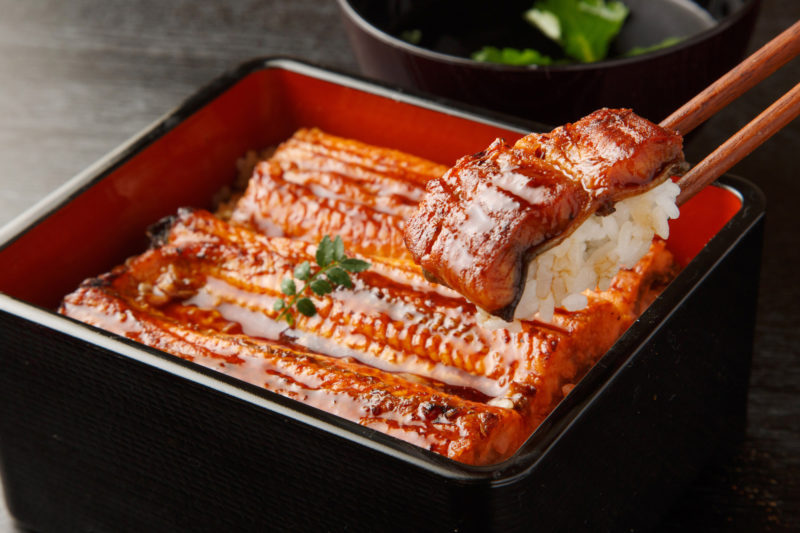21. Unagi-no-kabayaki (eel)
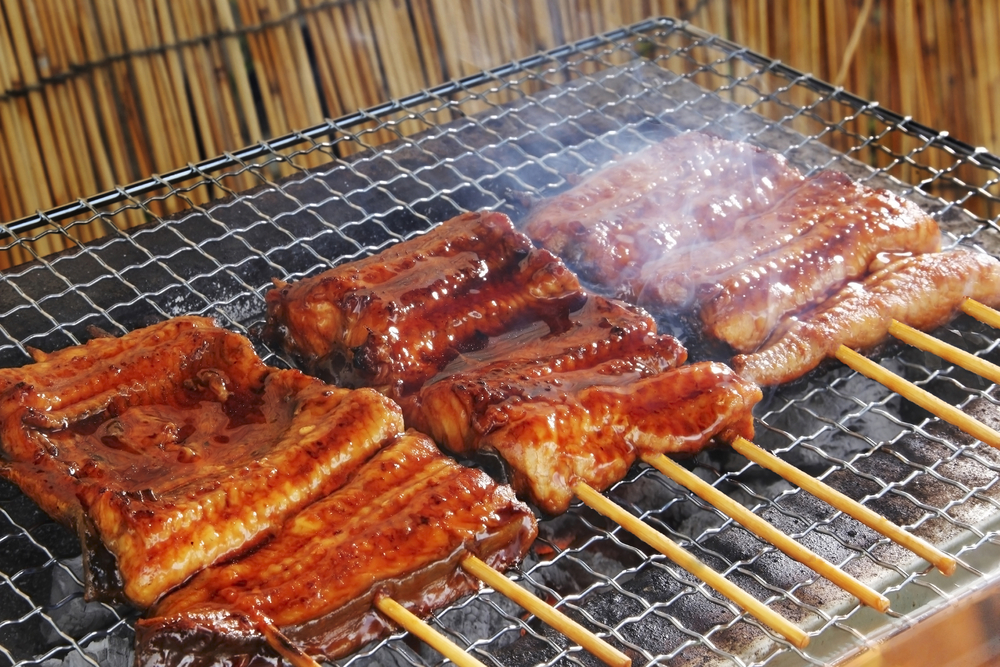
Unagi-no-kabayaki is eel (unagi in Japanese) coated in a sauce and broiled over charcoal. In certain regions, it is steamed, rather than broiled. There is a type of kabayaki which is not dipped in sauce before broiling, known as shirayaki, but generally, the eel is dipped in a soy sauce and sugar-based sweet sauce before broiling. You can enjoy the unagi straight, but most of the time it is eaten on a bed of rice. In Nagoya, there is a unique way of eating unagi known as hitsumabushi, where tea is poured over the rice and eaten.
22. Kani (Crab)
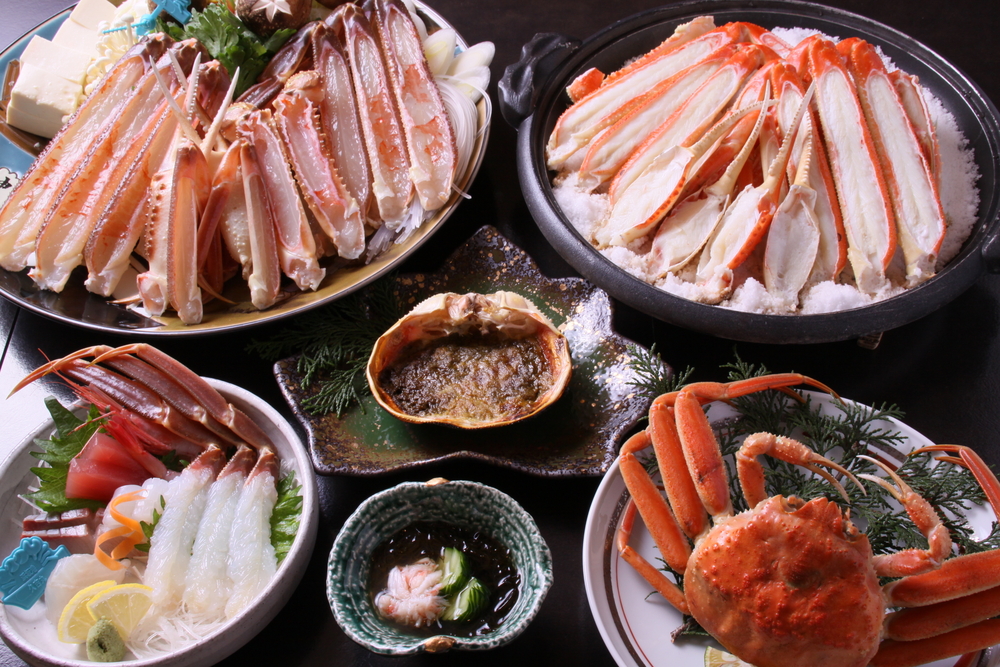
Kani (crab in English), is eaten all over the world, but the crab in Japan is special. The “hair crab” (kegani in Japanese), with its fine meat and deep flavor, is exquisite. The Japanese especially enjoy a part called kanimiso, the deep green paste found in the intestinal area, which has a slightly bitter taste but one that you grow used to. If you are looking to have your fill of crab, we recommend the red king crab (tarabagani in Japanese), which you can find in Hokkaido and specialist restaurants.
23. Yakizakana
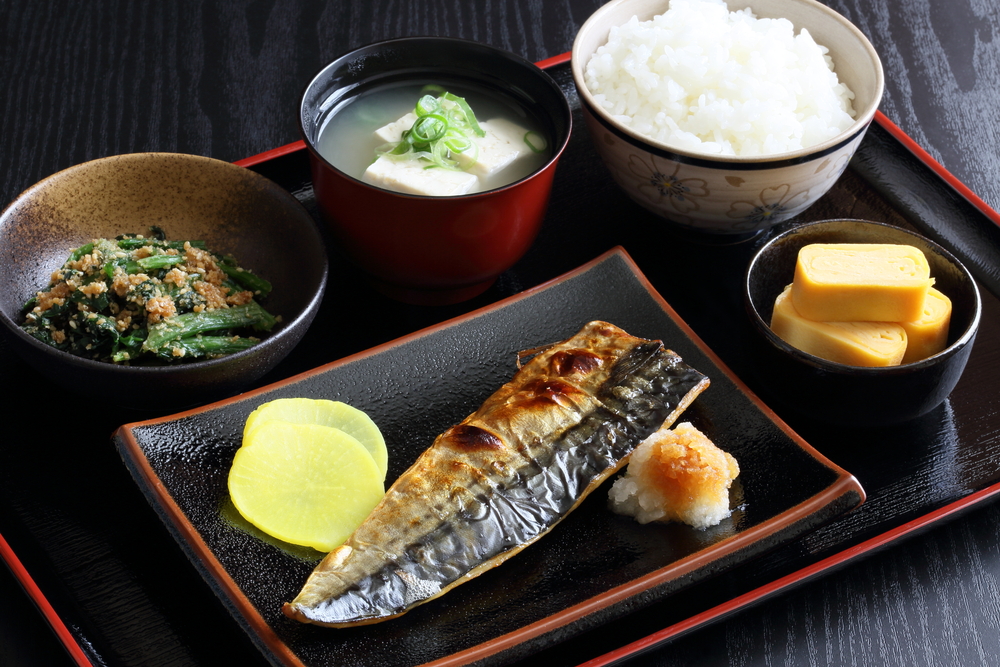
A traditional Japanese dish of fish grilled directly on a flame, giving the skin a crisp texture. The typical fish eaten are horse mackerel (aji), saury (sanma), mackerel (saba) and salmon (shake). You can enjoy yakizakana wherever you are in Japan, and if you stay in a ryokan, or Japanese inn, it will be served at breakfast. There are some cases where the fish is covered in miso before grilling as well.
24. Nizakana
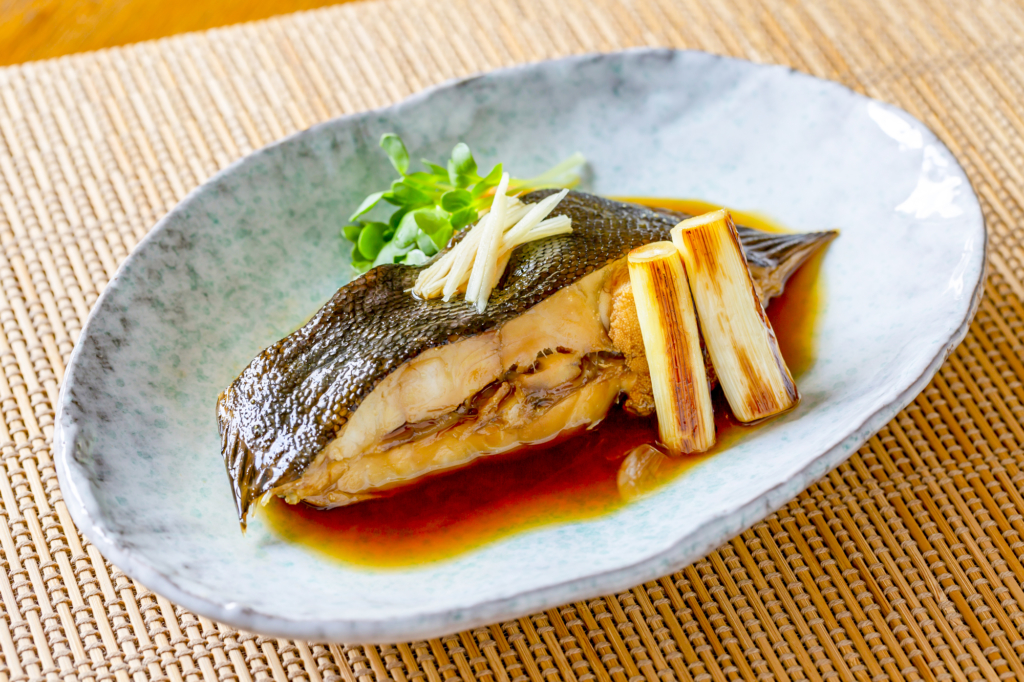
Nizakana is fish boiled in a soy sauce and super based sauce which has an entirely different flavor to grilled fish. The typical fishes used include mackerel (saba), righteye flounder (karei) and splendid alfonsino (kinmedai). Buridaikon, a dish where the fish is boiled with daikon is another popular dish. You can enjoy nizakana at all sorts of restaurants, including set meal restaurants and Japanese style bars/restaurants known as izakaya.
25. Fried Dishes From Western-Style Restaurants

In addition to tonkatsu, there are a number of fried dishes that are made in a similar way to tempura. These include korokke (croquettes), menchikatsu (a deep-fried cake of mince, the name comes from mince and cutlet), ebi fry (prawn fry), kani cream korokke (croquettes with crab added) and kaki fry (oyster fry). You can enjoy these delicious dishes at western-style restaurants. The way the dish is served depends on the restaurant.
26. Jingisukan

A local dish from Hokkaido and Iwate Prefecture, jingisukan refers to a dish where mutton and vegetables are cooked in a special pot in which the central part is raised. The meat is cooked on the central part of the pot, allowing the juices from the meat to flow down and soak into the vegetables on the sides of the pot. Mutton has a very distinct smell, so for those who might not enjoy it, we recommend trying lamb instead.
27. Kansai-Style Kushi-Katsu

A Kansai region dish where meat and vegetables are put on skewers and fried in batter in a similar way to tonkatsu. There are many different types of kushi-katsu, so you can enjoy all sorts of flavors. The kushi-katsu should be dipped in worcester sauce, but please remember that the sauce is shared with other customers, so you should only dip it in once. Also please note that at non-specialist kushi-katsu restaurants in the Kanto region, kushi-katsu are pork and onion deep-fried skewers.
28. Oden
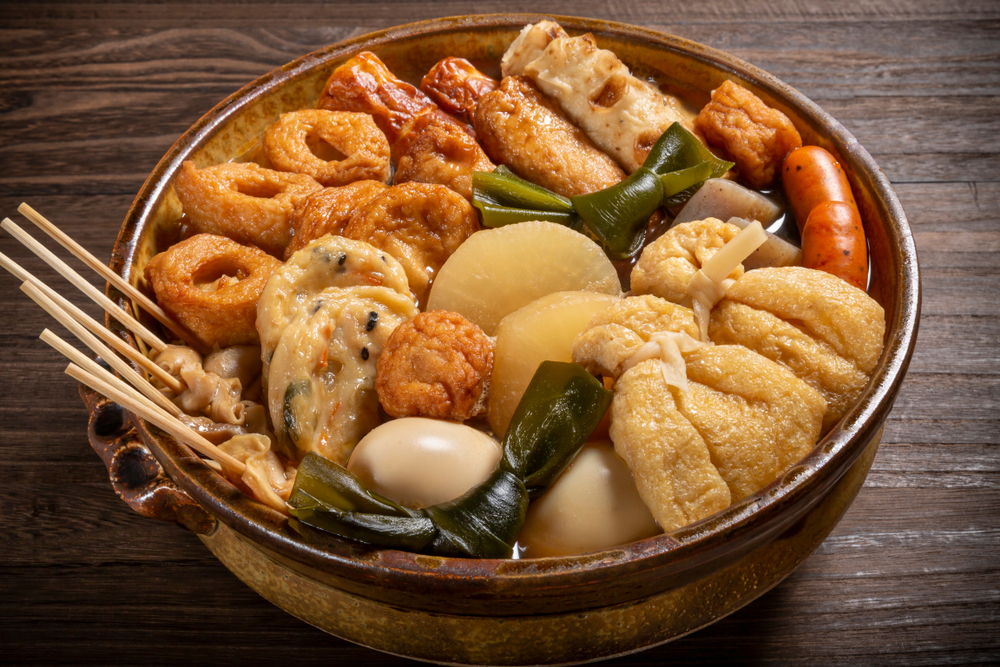
Although there is a great deal of variation between regions in Japan, the typical oden is a dish in which daikon, meat and fish paste balls, boiled eggs and other ingredients are boiled in a stock made from dried bonito or konbu mixed with soy sauce. You can enjoy oden at special oden restaurants, but you can also find oden in convenience stores, so why not try some?
29. Okonomiyaki

A dish in which vegetables, meat, seafood and other ingredients are added to a mixture of wheat flour and egg and cooked on a hotplate. Depending on the region, there are times where the ingredients are layered onto the mix rather than being mixed in. In most areas of Japan, the chefs at the restaurant will cook the okonomiyaki for you, but in the Kanto region, there are many restaurants where you make it yourself. (If you don’t feel confident in doing it yourself, don’t worry – the staff of the restaurant will be happy to make it for you!) A special sauce is the usual flavoring, and adding mayonnaise to the dish makes it even better! You can also find okonomiyaki stalls at festivals and events. If you’re in Osaka, one of okonomiyaki hotspots, don’t miss it. Here’s the tsunagu Japan pick of 15 Popular Okonomiyaki Spots to Try in Osaka.
30. Buta-no-Shogayaki
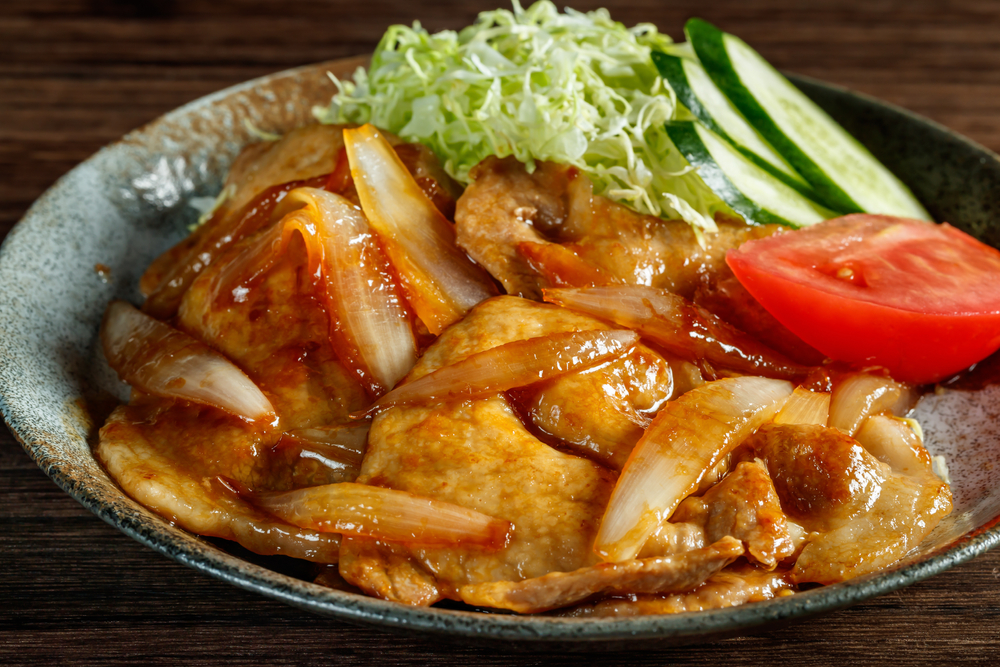
A similar dish to pork ginger (in Japanese, pork is buta and ginger is shoga), however the pork is thinly sliced and the soy sauce and sake (Japanese rice wine) used in the dish give it a slightly different flavor. A typical dish found on the menu of most set-menu restaurants, you can find this dish wherever you go.
31. Katsudon

A dish in which tonkatsu and onions are boiled in a soy sauce based sauce covered with beaten egg. Freshly fried tonkatsu is delicious, but katsudon is a whole new taste. You can find katsudon not only in special tonkatsu restaurants but in set menu restaurants and soba restaurants as well, but to enjoy the best katsudon, we recommend going to a tonkatsu restaurant.
32. Fugu
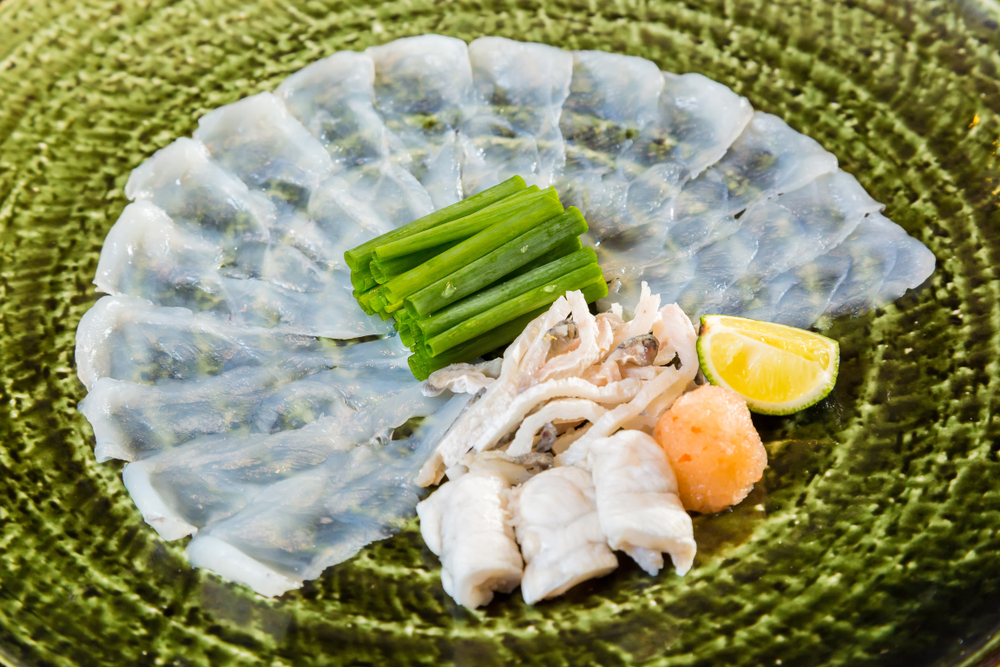
Fugu, or puffer fish in English, is a poisonous fish that can only legally be prepared at licensed restaurants. It is a quite expensive dish, but at a fugu restaurant, you can enjoy a variety of fugu dishes, such as fugu hot pot, fugu karaage and fugu sashimi. Don’t miss tsunagu Japan’s guide to 9 Good Fugu Restaurants in Tokyo, too.
33. Gyoza

Gyoza are traditional Chinese dumplings. In China, suigyoza, or boiled gyoza, are mainstream, but in Japan, it is yakigyoza, or pan-fried gyoza. Another difference is the use of garlic in the gyoza. Gyoza are typically dipped in a sauce made of soy sauce, Chinese chili oil, vinegar and other ingredients you can make to your taste. While there are a lot of gyoza restaurants, they aren’t really expensive, so you can relax and enjoy your gyoza!
34. Nikujaga

One example of traditional Japanese home cooking where potatoes and meat are boiled in a soy sauce and sugar based sauce. Carrots and shirataki (noodles made from konnyaku) are also sometimes added to the dish. It is a typical dish you can find in Japanese bar/restaurants called izakaya as well as set menu restaurants.
35. Takoyaki
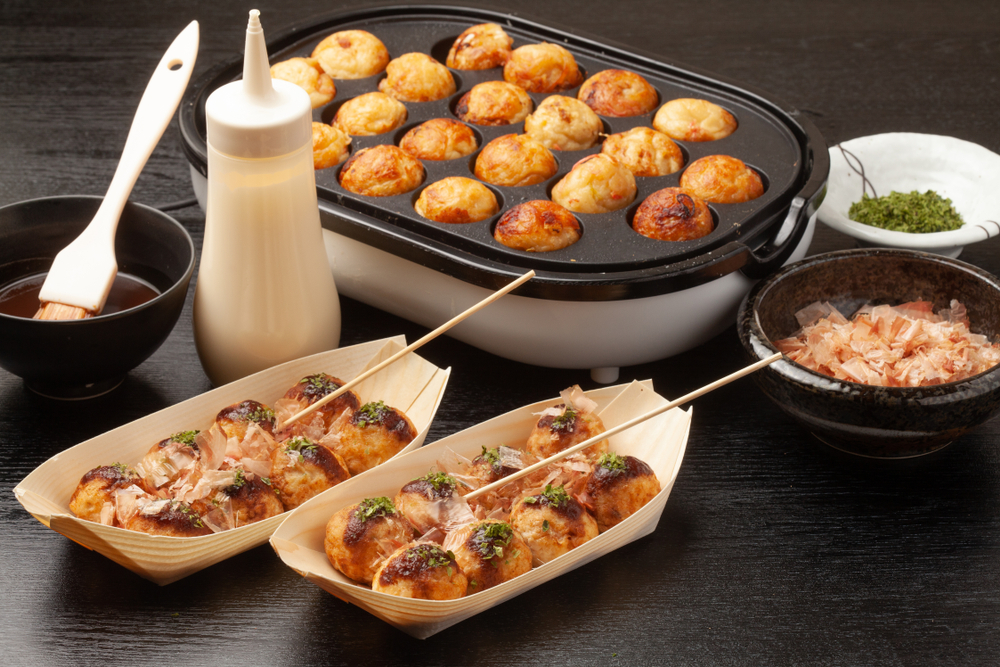
A mixture of wheat flour, water and stock are poured into a special hotplate with small half-circle molds in it. Cut squid, cabbage, dried shrimp and crunchy deep fried batter are then sprinkled into the mix, which is then fried. Part way through the cooking, the half-circle dumplings are turned over and become full spherical dumplings in the end. Takoyaki have a similar flavor to okonomiyaki, and are sprinkled with sauce and eaten. You can find takoyaki stands all over Japan, but we recommend visiting a takoyaki restaurant where you can enjoy various different types of flavoring. A plate of takoyaki will cost about 500 yen.
36. Yakisoba

A dish of fried noodles, pork, cabbage, bean sprouts and other ingredients, topped off with Worcester sauce. Yakisoba is usually garnished with benishoga, or red pickled ginger, and sprinkled with green dried seaweed. You can find yakisoba at stalls or at okonomiyaki restaurants, as well as convenience stores.
37. Omelet Rice

A dish where rice, chicken and onions are fried together and flavored with ketchup, and then covered with a thin rolled omelette. This is then topped off with ketchup, and depending on the restaurant, demi glace sauce. It is a popular dish with children, but adults love it, too! You can find it at western-style restaurants and set-menu restaurants.
38. Napolitan

Wieners, onions and green peppers fried with boiled pasta and flavored with a ketchup sauce. Like the Japanese version of tomato sauce pasta, but with a totally different taste. There are many Italian people who wince at the thought of it, but grow to love it once they try it. You can find napolitan pasta at western-style restaurants and cafes.
39. Kamameshi

Kamameshi is a dish where individual portions of rice are cooked in an iron pot, called a kama, with soy sauce, miring (sweet sake for seasoning) and other ingredients. Before cooking the rice, chicken, seafood, vegetables and other ingredients are also added, along with salmon roe after cooking. The dish isn’t eaten from the kama, but served in rice bowls. The burnt rice around the kama, known as koge, is delicious! There are special kamameshi restaurants where you can enjoy this dish.
40. Tamagoyaki

Tamagoyaki is a type of rolled omelette. While simple to make, it is a very flavorful dish. In some cases, soy sauce or stock, known as dashi in Japanese, are added to the tamagoyaki. The tamagoyaki with dashi added are known as dashimaki tamago, and while the appearance is similar to regular tamagoyaki, but the flavor is quite different. You can find tamagoyaki in convenience stores, but they don’t compare to the real thing. There are specialist tamagoyaki stores where you can take out, so why not give it a try?
The information in this article is accurate at the time of publication.
